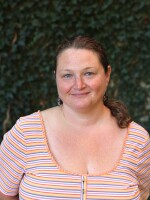It’s a Sunday afternoon, and there’s a party of sorts going on at 12th Street and Clairmount on Detroit's west side.
Exactly 50 years ago, the police raid that sparked the city's massive, deadly riots started right here. Now there’s a newly-refurbished park on that corner and a marker designating it a state historic site.

Lots of people came out for the event. Cast members from the new movie Detroit were there. It was part remembrance for an event that devastated this community, and part celebration of a new sense of revival.
Angela Franklin has lived in the Virginia Park neighborhood for 54 years.
“Right now I see a comeback," she said. "My coworkers, they ask, ‘Why do you stay there?’ And I never felt why I stayed here, but it’s home. And now I see why I stayed.”
Franklin was only four years old in 1967. But she remembers the tanks on her front lawn, and having to stay away from the windows for fear of gunfire.
Her son, Martinez Franklin, was born in 1988. He has different memories of the neighborhood, like most of his friends dying as teenagers.
“I’m 29 now, so all my boys been dead about ten years ago," he said.
Franklin sees some of the same positive changes his mom does, but he’s also cynical. He doesn’t mince words about his view of this “comeback.” Why, he asks, aren’t there any schools around the neighborhood?
“If you’re not gonna educate us, then just get the f*** on. Excuse my language,” he said. “Y’all can build all these new parks and all that, but that’s not doing none of us good. The only way they’re gonna give us good education is if white people here. No disrespect.”
Rebuilding a community
That new park is Gordon Park, and it’s where I met Lamont Causey a couple weeks before the 1967 commemorations.
Causey has also spent his whole life here. He has lots of stories, and doesn’t mind sharing them.
“I remember it being a community, over 200 businesses up and down 12th Street.”
https://www.youtube.com/watch?v=LUDeSaWh5Zo
12th Street has since been re-named Rosa Parks Boulevard, but Causey tells me everybody still calls it by its old name.
For the past 25 years, Causey has run the group “Brothers Always Together” with a group of guys from the neighborhood that he’s known since they were kids.
They do everything from putting on community fish fries to shoveling snow for elderly neighbors.
Causey says just in the past few years, he's seen things really starting to change.
“That type of sense to where you can feel all right walking down the street. Ten years ago, a Caucasian person couldn’t walk down the street with their dog over here. Now you can. You see it all the time over here.”
"What we're trying to do is build up a neighborhood, which will eventually build up a community when we get back our schools." - Joyce Moore
Causey knows that makes some other longtime residents nervous, but he welcomes the newcomers.
The city had planned to demolish about 100 blighted homes in the 12th and Clairmount area. When she heard that, Joyce Moore swung into action.
Moore has been in Virginia Park 53 years. She’s a longtime member of block clubs and community councils. So when she heard about the planned demos, she went to city officials to try and stop it. She got some houses taken off the demo list.
“What we’re trying to do is build up a neighborhood, which will eventually build up a community when we get back our schools," Moore said.
She didn’t think mass demolitions made sense for the area. Working with the Detroit Land Bank Authority, which owns many of the vacant homes, they came up with ways to save at least 17 of them.
She thought it would take years to see real progress, but there was a lot of interest. It seems like most of the buyers plan to live in the homes. They’re even helping refurbish each other’s properties.

“And it started to change immediately, which was really great. The fact that people are buying…and I’m glad it’s young folk that are buying,” she said.
Moore does worry that longtime residents seem to have to fight for a voice in their neighborhood’s redevelopment.
But Moore is mostly grateful she’s here to witness this. Like many older Detroiters I’ve talked to about 1967, Moore feels a sense of gratitude that she's lived long enough to see the cycle of devastation give way to something more like hope.







